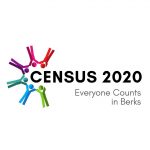We know the COVID-19 pandemic has caused record job losses and transformed the nation’s employment landscape but recently released historical data tables put the magnitude of the economic disruption in clear context.
In 2017, for example, roughly 30 million adults experienced either an end of employment or a reduction in work hours, including both involuntary and voluntary job terminations. But only about 3.8 million collected Unemployment Insurance (UI), which is contingent on involuntary job termination, according to the Census Bureau’s Survey of Income and Program Participation (SIPP).
In contrast, roughly four times the number of people (115 million) had experienced a loss in employment income from the start of the pandemic in March 2020 through February 2021.
As a result, roughly 10 times the number of people (37 million) qualified for and received UI during that period, according to the Census Bureau’s experimental Household Pulse Survey.
Economic Sectors
The COVID-19 pandemic has taken a significant toll on particular economic sectors like hospitality, which includes jobs in the arts, entertainment, recreation, accommodation or food services.
In March and April of 2020 alone, 8.3 million people lost hospitality jobs, according to the Bureau of Labor Statistics.
In contrast, SIPP data show that only about five million people lost jobs in the hospitality sector during all of 2017, not significantly different from job losses in 2013 – evidence that the pandemic has caused major disruptions to what had been a stable economic sector.
Need for Government Assistance
The SIPP data provide other important points of historical context.
In 2017, for example, roughly 16 million households received Supplemental Nutrition Assistance Program (SNAP) benefits, previously known as food stamps. Additionally, roughly 34 million children received school-provided meals, with 25 million relying on free or reduced-price school meals for their daily food needs.
Both SNAP and school meal programs have been granted emergency expansions to help combat pandemic-related financial hardships. There’s a clear need for such programs.
In the second half of February 2021, an estimated 26 million households reported receiving SNAP in the prior week, while almost 12 million households with children were estimated not to have enough to eat, according to the Household Pulse Survey. However, we don’t yet know exactly how many households or children the expanded programs have helped.
New SIPP historical tables provide annual data from 2013 to 2017 on the receipt of social security, Temporary Assistance to Needy Families (TANF), SNAP, Special Supplemental Nutrition Program for Women, Infants, and Children (WIC), Supplemental Security Income (SSI), retirement income, job loss, unemployment insurance, free- and reduced-price school meals, veterans’ benefits, and child support. Future SIPP data releases will allow us to track program participation through the pandemic.
The Household Pulse Survey is ongoing and provides near real-time data about the circumstances of U.S. households amid the COVID-19 pandemic every two weeks.




